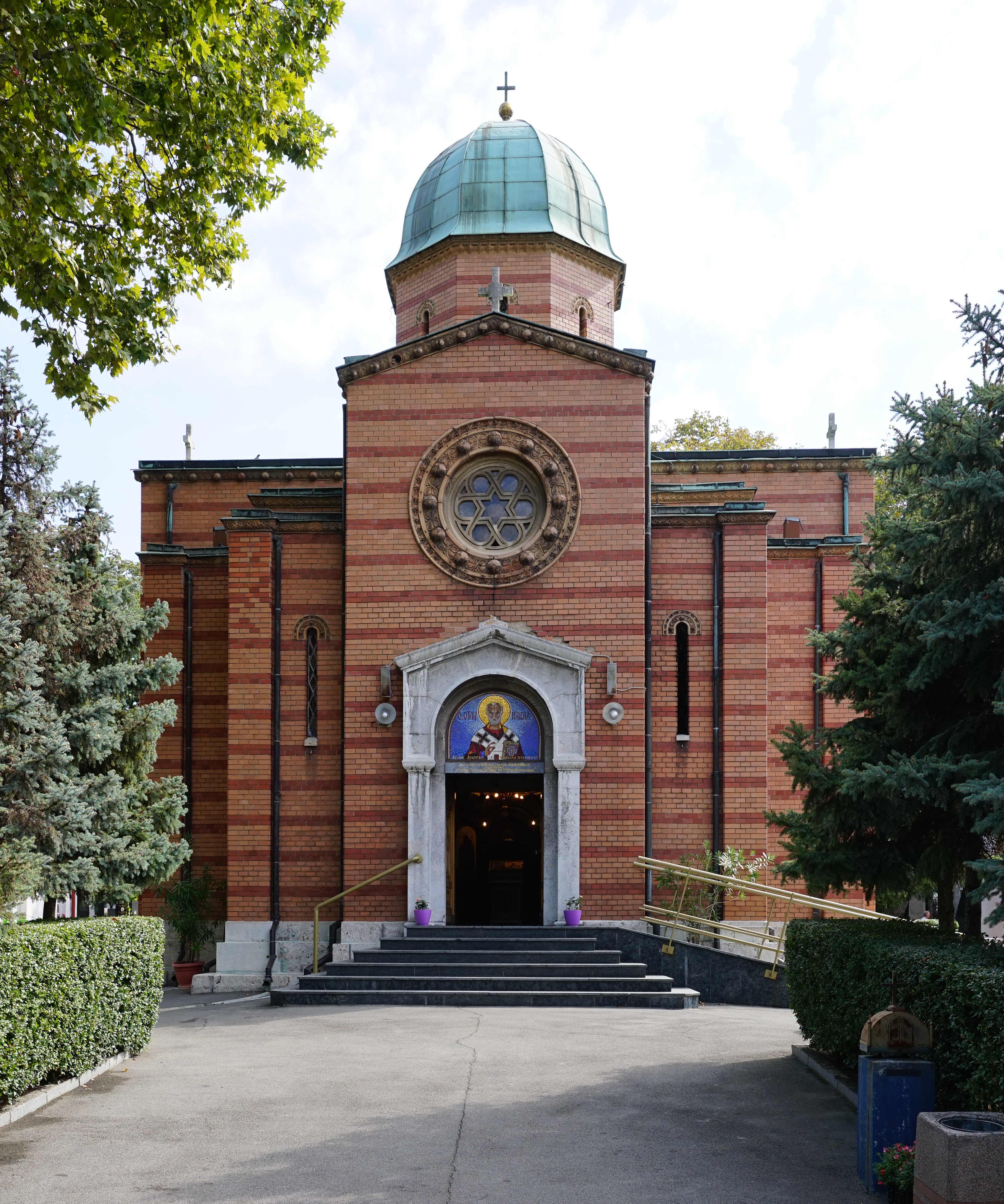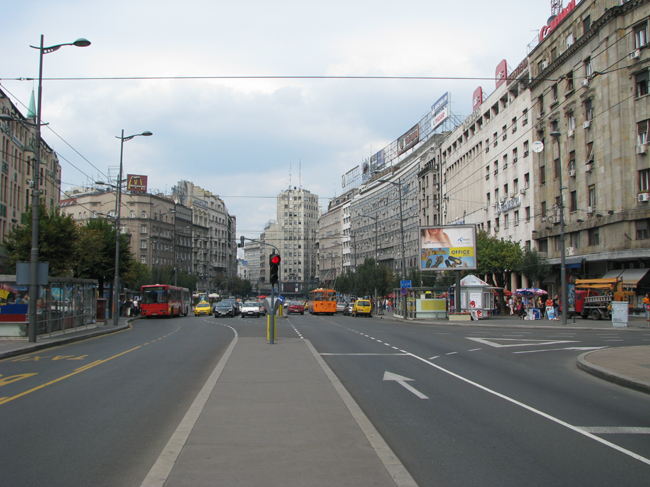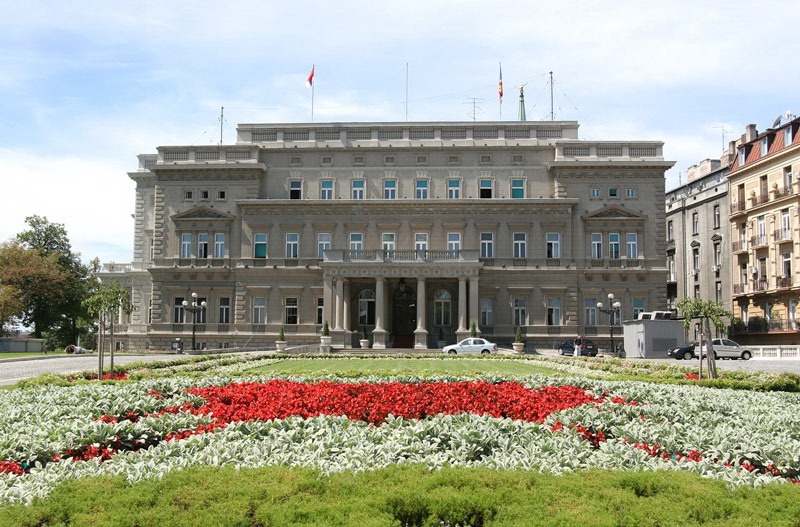|
Belgrade New Cemetery
The New Cemetery ( sr, Ново гробље, ''Novo groblje'') is a cemetery complex in Belgrade, Serbia, with a distinct history. It is located in Ruzveltova street in Zvezdara municipality. The cemetery was built in 1886 as the third Christian cemetery in Belgrade and as the first architecturally and urbanistically planned cemetery in Serbia. In addition to graves of ordinary citizens, the cemetery complex also includes special sections: military graves from Serbian-Ottoman War (1876-1877), Serbo-Bulgarian War, Balkan Wars and World Wars, the Alley of the Greats and the Alley of Distinguished Citizens, where some of the most important persons in the history of Serbia are buried. Two Jewish cemeteries (a Sephardic and an Ashkenazi one) are located adjacent to the New Cemetery, but are administrated separately. Location The cemetery is located along the ''Ruzveltova'' (official seat, at No. 50) and ''Mije Kovačevića'' streets, which divide it in two sections, left or west ... [...More Info...] [...Related Items...] OR: [Wikipedia] [Google] [Baidu] |
Serbia
Serbia (, ; Serbian: , , ), officially the Republic of Serbia (Serbian: , , ), is a landlocked country in Southeastern and Central Europe, situated at the crossroads of the Pannonian Basin and the Balkans. It shares land borders with Hungary to the north, Romania to the northeast, Bulgaria to the southeast, North Macedonia to the south, Croatia and Bosnia and Herzegovina to the west, and Montenegro to the southwest, and claims a border with Albania through the disputed territory of Kosovo. Serbia without Kosovo has about 6.7 million inhabitants, about 8.4 million if Kosvo is included. Its capital Belgrade is also the largest city. Continuously inhabited since the Paleolithic Age, the territory of modern-day Serbia faced Slavic migrations in the 6th century, establishing several regional states in the early Middle Ages at times recognised as tributaries to the Byzantine, Frankish and Hungarian kingdoms. The Serbian Kingdom obtained recognition by the Holy See and Consta ... [...More Info...] [...Related Items...] OR: [Wikipedia] [Google] [Baidu] |
Zemun
Zemun ( sr-cyrl, Земун, ; hu, Zimony) is a municipality in the city of Belgrade. Zemun was a separate town that was absorbed into Belgrade in 1934. It lies on the right bank of the Danube river, upstream from downtown Belgrade. The development of New Belgrade in the late 20th century expanded the continuous urban area of Belgrade and merged it with Zemun. The town was conquered by the Kingdom of Hungary in the 12th century and in the 15th century it was given as a personal possession to the Serbian despot Đurađ Branković. After the Serbian Despotate fell to the Ottoman Empire in 1459, Zemun became an important military outpost. Its strategic location near the confluence of the Sava and the Danube placed it in the center of the continued border wars between the Habsburg and the Ottoman empires. The Treaty of Belgrade of 1739 finally placed the town into Habsburg possession, the Military Frontier was organized in the region in 1746, and the town of Zemun was granted the ... [...More Info...] [...Related Items...] OR: [Wikipedia] [Google] [Baidu] |
Crematory
A crematorium or crematory is a venue for the cremation of the dead. Modern crematoria contain at least one cremator (also known as a crematory, retort or cremation chamber), a purpose-built furnace. In some countries a crematorium can also be a venue for open-air cremation. In many countries, crematoria contain facilities for funeral ceremonies, such as a chapel. Some crematoria also incorporate a columbarium, a place for interring cremation ashes. Ceremonial facilities While a crematorium can be any place containing a cremator, modern crematoria are designed to serve a number of purposes. As well as being a place for the practical but dignified disposal of dead bodies, they must also serve the emotional and spiritual needs of the mourners. The design of a crematorium is often heavily influenced by the funeral customs of its country. For example, crematoria in the United Kingdom are designed with a separation between the funeral and cremation facilities, as it is not cu ... [...More Info...] [...Related Items...] OR: [Wikipedia] [Google] [Baidu] |
Bogdan Bogdanović (architect)
Bogdan Bogdanović (; 20 August 1922 – 18 June 2010) was a Serbian and Yugoslav architect, urbanist and essayist. He taught architecture at the University of Belgrade Faculty of Architecture, where he also served as dean. Bogdanović wrote numerous articles about urbanism, especially about its mythic and symbolic aspects, some of which appeared in international journals such as ''El País'', ''Die Zeit'', and others. He was also involved in politics, as a Yugoslav Partisan in World War II, later as mayor of Belgrade. When Slobodan Milošević rose to power and nationalism gained ground in Yugoslavia, Bogdanović became a dissident. Bogdanović is best known for designing monuments and memorials commemorating victims and resistance fighters of World War II built all over Yugoslavia from the early 1950s to the 1980s. In particular, the monumental concrete sculpture titled ''Stone Flower'' near the site of Jasenovac concentration camp gained international attention. Life Bo ... [...More Info...] [...Related Items...] OR: [Wikipedia] [Google] [Baidu] |
World War II
World War II or the Second World War, often abbreviated as WWII or WW2, was a world war that lasted from 1939 to 1945. It involved the vast majority of the world's countries—including all of the great powers—forming two opposing military alliances: the Allies and the Axis powers. World War II was a total war that directly involved more than 100 million personnel from more than 30 countries. The major participants in the war threw their entire economic, industrial, and scientific capabilities behind the war effort, blurring the distinction between civilian and military resources. Aircraft played a major role in the conflict, enabling the strategic bombing of population centres and deploying the only two nuclear weapons ever used in war. World War II was by far the deadliest conflict in human history; it resulted in 70 to 85 million fatalities, mostly among civilians. Tens of millions died due to genocides (including the Holocaust), starvation, massa ... [...More Info...] [...Related Items...] OR: [Wikipedia] [Google] [Baidu] |
The Monument And Memorial Ossuary To The Defenders Of Belgrade 1914-1918
The Monument and Memorial Ossuary to the Defenders of Belgrade 1914-1918, are First World War memorials in Belgrade. Due to its location in Novo Groblje, the memorials are less accessible to broader public. History The most frequently attacked and defended of all European cities, Belgrade was the first capital city that was bombarded in the First World War. Marshal Louis Franchet d`Esperey decorated the city with the French Legion of Honour for the heroism of its defenders. Thirteen years after the war, in 1931, the remains of fallen defenders were disinterred and laid in the memorial ossuary built in Novo Groblje (New Cemetery). The ossuary also received the remains of soldiers who had perished in the Balkan Wars. The erection of the memorial ossuary on the site of a former military cemetery was funded from the contributions given by the survivors assembled in the Association of Reserve Officers and Soldiers and by the City of Belgrade. Being the strongest military veteran org ... [...More Info...] [...Related Items...] OR: [Wikipedia] [Google] [Baidu] |
Interbellum
In the history of the 20th century, the interwar period lasted from 11 November 1918 to 1 September 1939 (20 years, 9 months, 21 days), the end of the First World War to the beginning of the Second World War. The interwar period was relatively short, yet featured many significant social, political, and economic changes throughout the world. Petroleum-based energy production and associated mechanisation led to the prosperous Roaring Twenties, a time of both social mobility and economic mobility for the middle class. Automobiles, electric lighting, radio, and more became common among populations in the developed world. The indulgences of the era subsequently were followed by the Great Depression, an unprecedented worldwide economic downturn that severely damaged many of the world's largest economies. Politically, the era coincided with the rise of communism, starting in Russia with the October Revolution and Russian Civil War, at the end of World War I, and ended with the ris ... [...More Info...] [...Related Items...] OR: [Wikipedia] [Google] [Baidu] |
World War I
World War I (28 July 1914 11 November 1918), often abbreviated as WWI, was one of the deadliest global conflicts in history. Belligerents included much of Europe, the Russian Empire, the United States, and the Ottoman Empire, with fighting occurring throughout Europe, the Middle East, Africa, the Pacific, and parts of Asia. An estimated 9 million soldiers were killed in combat, plus another 23 million wounded, while 5 million civilians died as a result of military action, hunger, and disease. Millions more died in genocides within the Ottoman Empire and in the 1918 influenza pandemic, which was exacerbated by the movement of combatants during the war. Prior to 1914, the European great powers were divided between the Triple Entente (comprising France, Russia, and Britain) and the Triple Alliance (containing Germany, Austria-Hungary, and Italy). Tensions in the Balkans came to a head on 28 June 1914, following the assassination of Archduke Franz Ferdi ... [...More Info...] [...Related Items...] OR: [Wikipedia] [Google] [Baidu] |
Terazije
Terazije ( sr-Cyrl, Теразијe) is the central town square and the surrounding neighborhood of Belgrade, Serbia. It is located in the municipality of Stari Grad. Today, Terazije has primarily function of the main transit square, surrounded by the important public buildings, cultural institutions, hotels, public monuments and parks. Though not classically shaped square, Terazije was historically important as the gathering spot and the former business and commercial center of Belgrade. With the Knez Mihailova Street, which extends to the northeast connecting directly Terazije and Belgrade Fortress, the square is one of the oldest and most recognizable ambience units of Belgrade. Due to its historical and cultural importance, Terazije was declared a protected spatial cultural-historical unit in January 2020. Location Despite the fact that many Belgraders consider the Republic Square or Kalemegdan to be the city's centerpiece areas, Terazije is Belgrade's designated cente ... [...More Info...] [...Related Items...] OR: [Wikipedia] [Google] [Baidu] |
Politika
''Politika'' ( sr-Cyrl, Политика; ''Politics'') is a Serbian daily newspaper, published in Belgrade. Founded in 1904 by Vladislav F. Ribnikar, it is the oldest daily newspaper still in circulation in the Balkans. Publishing and ownership ''Politika'' is published by Politika novine i magazini (PNM), a joint venture between Politika AD and ''East Media Group''. The current director of PNM is Mira Glišić Simić. PNM also publishes: *''Sportski žurnal'' *'' Politikin zabavnik'' *''Svet kompjutera'' *''Ilustrovana politika'' *''Bazar'' Editorial history *Vladislav F. Ribnikar (1904–1915) *Miomir Milenović i Jovan Tanović (1915–1941) *Živorad Minović (1985–1991) *Aleksandar Prlja (1991–1994) *Boško Jakšić (1994) *Dragan Hadži Antić (1994–2000) *Vojin Partonić (2000–2001) *Milan Mišić (2001–2005) *Ljiljana Smajlović (2005–2008) *Radmilo Kljajić (2008) *Dragan Bujošević (2008–2013) *Ljiljana Smajlović (2013–2016) *Žarko Rakić (2016-2 ... [...More Info...] [...Related Items...] OR: [Wikipedia] [Google] [Baidu] |
Vladan Đorđević
Ipokrat "Vladan" Đorđević (, sr-Cyrl, Владан Ђорђевић, 21 November 1844 – 31 August 1930) was a Serbian politician, diplomat, physician, prolific writer, and organizer of the State Sanitary Service. He held the post of mayor of Belgrade, Minister of Education, Prime Minister of Serbia, Minister of Foreign Affairs and Envoy to Athens and Istanbul. Early life Ipokrat Đorđević (Ипократ Ђорђевић) was born in Belgrade, the son of pharmacist Đorđe Đorđević and Marija (née Leko). He was of partial Aromanian descent from the region of Macedonia. He had two siblings. He was named ''Ipokrat'' after Hippocrates, by his godfather Kosta German. He later changed his name to ''Vladan'', which had been his pen name, upon the suggestion of his professor at the Lyceum, Đuro Daničić, who Serbianized many names of his students. His father, a pharmacist, came from a family that had long been established in Serbia. Vladan Đorđević's mother died ... [...More Info...] [...Related Items...] OR: [Wikipedia] [Google] [Baidu] |
Mayor Of Belgrade
The Mayor of Belgrade ( sr, Градоначелник Београда / ''Gradonačelnik Beograda'') is the head of the City of Belgrade (the capital and largest city of Serbia). The Mayor acts on behalf of the city, and performs an executive function in the City of Belgrade. The position is important as the city is the most important hub of economy, culture, science and technology in Serbia. The current Mayor of Belgrade is Aleksandar Šapić ( SNS). He was elected by the City Assembly on 20 June 2022, following the 2022 City Assembly election. Office According to the current legislation, the Mayor is elected along with members of the City Assembly at the direct secret ballot for the period of four years. The Mayor may not be a councilor of the City Assembly. The Mayor has a Deputy who replaces him/her in case of an extended absence and/or due to any other reasons that prevent the Mayor to perform the duties. The Mayor appoints and dismisses the Deputy Mayor based on the ... [...More Info...] [...Related Items...] OR: [Wikipedia] [Google] [Baidu] |

.jpg)




